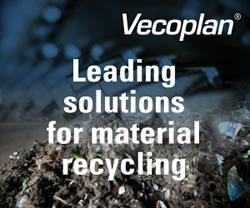Soltec's bifacial tracking increases production by 0.30%
• Soltec's new algorithm for bifacial modules seeks the optimal position of solar trackers in a photovoltaic plant considering both front and rear radiation. • The estimated economic gain for a 50 MW plant in Spain is €6,200 per year. • This algorithm is added to others from the company, such as TeamTrack or Diffuse Booster.
Murcia, May 16th, 2023 - Soltec, a vertically integrated company dedicated to photovoltaic projects with solar trackers, has launched its new tracking algorithm, bifacial tracking. This new algorithm seeks the optimal position of the solar tracker considering not only the front radiation, as all tracking algorithms have done until now, but also the rear radiation. Thus, the algorithm calculates the perfect position or angle that allows maximizing production by considering the radiation from both sides of the bifacial module.
"Although bifacial photovoltaic modules have become very popular in recent years and are practically the first choice for most developers, structure manufacturers have not yet adapted their tracking algorithms to take full advantage of them, until now using a standard tracking approach identical to that used for monofacial modules. However, with Soltec's bifacial tracking, we have the opportunity to position the trackers at new angles that allow us to maximize total gain by taking into account both sides of the module and not just the front", said Javier Guerrero, leader of the research and PhD in Renewable Energies from the Polytechnic University of Cartagena.
This algorithm adds to other tracking algorithms developed by the company, all designed to increase plant production and therefore its economic performance. This is the case with the 'TeamTrack' algorithm, which avoids shading between rows of trackers during hours of lower solar radiation due to irregularities in the terrain, or the 'Diffuse Booster', whose objective is to maximize production when diffuse radiation is greater than direct radiation.
You can access the White Paper at:
https://lab.soltec.com/tracking-bifacial/
About Soltec
Soltec Power Holdings (ticker: 'SOL') is a company specialized in vertically integrated solutions in the photovoltaic solar energy sector, with a strong commitment to innovation and sustainability. Based in Murcia, the company was founded in 2004 and currently operates in 16 countries, with a strong presence in Spain, North America, and Latin America. The company has been listed on the Spanish Continuous Market since 2020.
Soltec structures its activity through three major business areas: i) Soltec's industrial division is the third-largest manufacturer of solar trackers globally, offering additional construction services to its customers to ensure a complete and integrated value proposition; ii) the photovoltaic project development division, with a strong environmental, social, and governance commitment; iii) Soltec Asset Management, a third business division through which Soltec manages the assets that the company maintains in its portfolio, with the aim of maximizing its benefits in the medium and long term.
Featured Product

